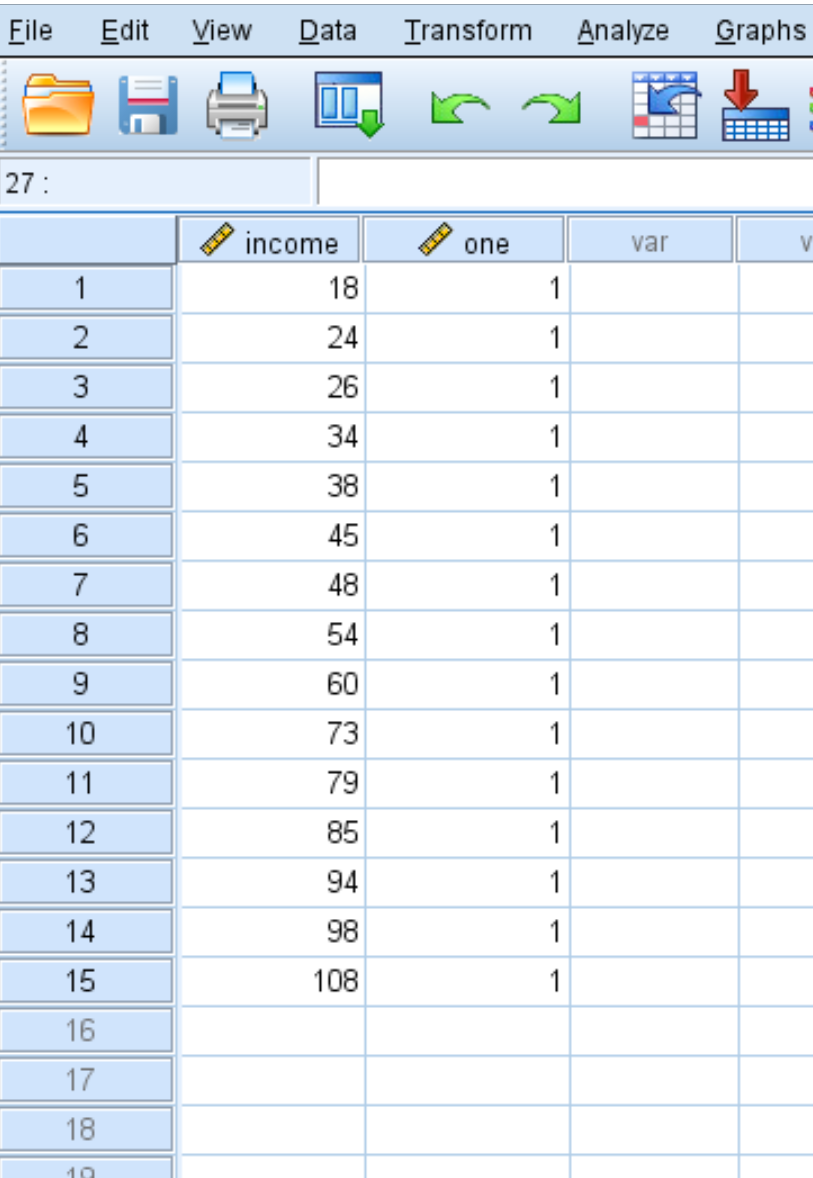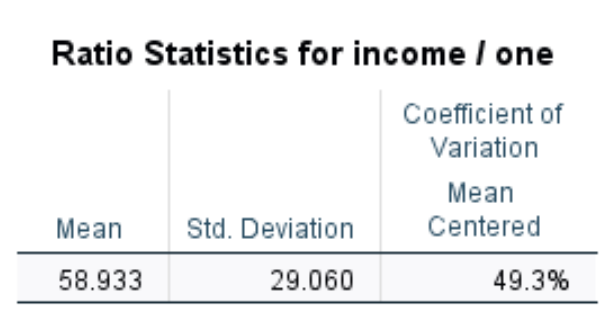The coefficient of variation is a way to measure how spread out values are in a dataset relative to the mean. It is calculated as:
Coefficient of variation = σ / μ
where:
σ = standard deviation of dataset
μ = mean of dataset
This tutorial explains how to calculate the coefficient of variation for a dataset in SPSS
Example: Coefficient of Variation in SPSS
Suppose we have the following dataset that displays the annual income (in thousands) for 15 individuals:
Use the following steps to calculate the coefficient of variation for this dataset in SPSS:

Step 1: Create a column of 1’s.
First, we need to create a column of all 1’s next to the original dataset:

Step 2: Calculate the coefficient of variation.
Next, click the Analyze tab, then Descriptive Statistics, then Ratio:

In the new window that pops up, drag the variable income into the box labelled Numerator and drag the variable one into the box labelled Denominator:

Next, click Statistics. Make sure the boxes are checked next to Mean, Standard deviation, and Mean Centered COV. Then click Continue.

Lastly, click OK.
Step 3: Interpret the coefficient of variation.
Once you click OK, the coefficient of variation for this dataset will be displayed:

We can see that the coefficient of variation for this dataset is 49.3%. This was calculated using the following formula:
CV = σ / μ * 100 = (29.060/58.933) * 100 = 49.3%.